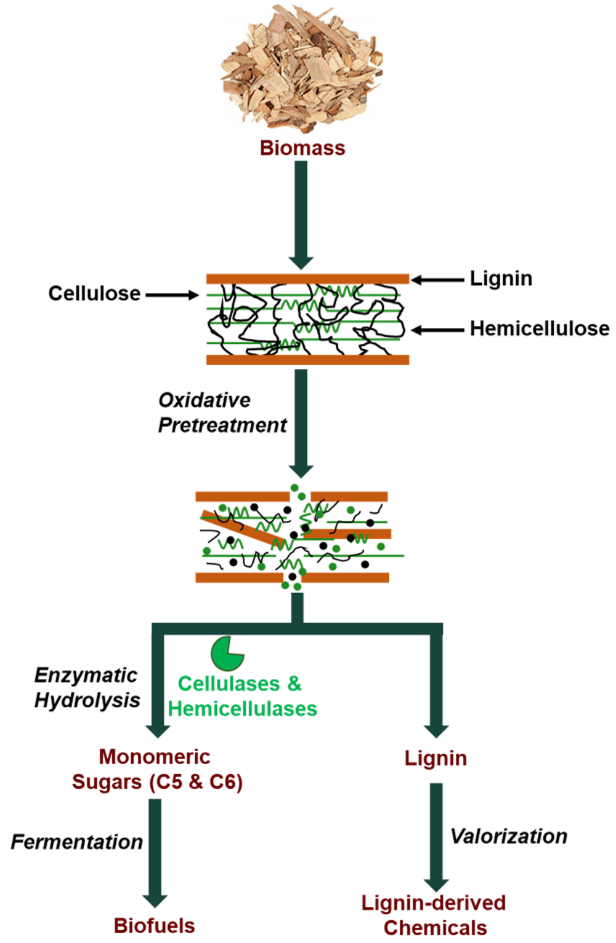Research: Project 4
Converting Biomass into renewable fuels and chemicals
Lignocellulosic biomass represents a vast and renewable source of fermentable carbohydrates and polyaromatics (lignin) which could be used for the sustainable production of green fuels and chemicals. Unfortunately, the complex and rigid structures found in all plant cell walls make the biomass challenging to degrade, thereby preventing straightforward utilization of both the carbohydrate and the lignin fractions. In nature, microbes successfully degrade plant cell walls using a variety of oxidative approaches. These strategies include the release of reactive oxygen species produced by redox-active metals and metalloenzymes.
 To facilitate biomass degradation, we are developing new catalytic strategies that
mimic certain features of these successful biological approaches. Specifically, we
developed a compelling new technology that utilizes copper catalysts, hydrogen peroxide,
and oxygen under alkaline conditions. This pretreatment method results in significant
improvements in the enzymatic digestibility of a number of biomass feedstocks, while
simultaneously providing high-quality co-products such as lignin. Current work in
our lab seeks to understand the mechanism by which enzymatic hydrolysis is improved,
to develop even more efficient catalytic systems, and to commercialize this technology.
To facilitate biomass degradation, we are developing new catalytic strategies that
mimic certain features of these successful biological approaches. Specifically, we
developed a compelling new technology that utilizes copper catalysts, hydrogen peroxide,
and oxygen under alkaline conditions. This pretreatment method results in significant
improvements in the enzymatic digestibility of a number of biomass feedstocks, while
simultaneously providing high-quality co-products such as lignin. Current work in
our lab seeks to understand the mechanism by which enzymatic hydrolysis is improved,
to develop even more efficient catalytic systems, and to commercialize this technology.